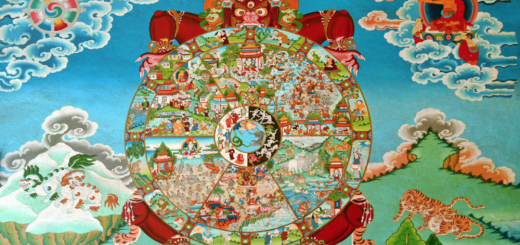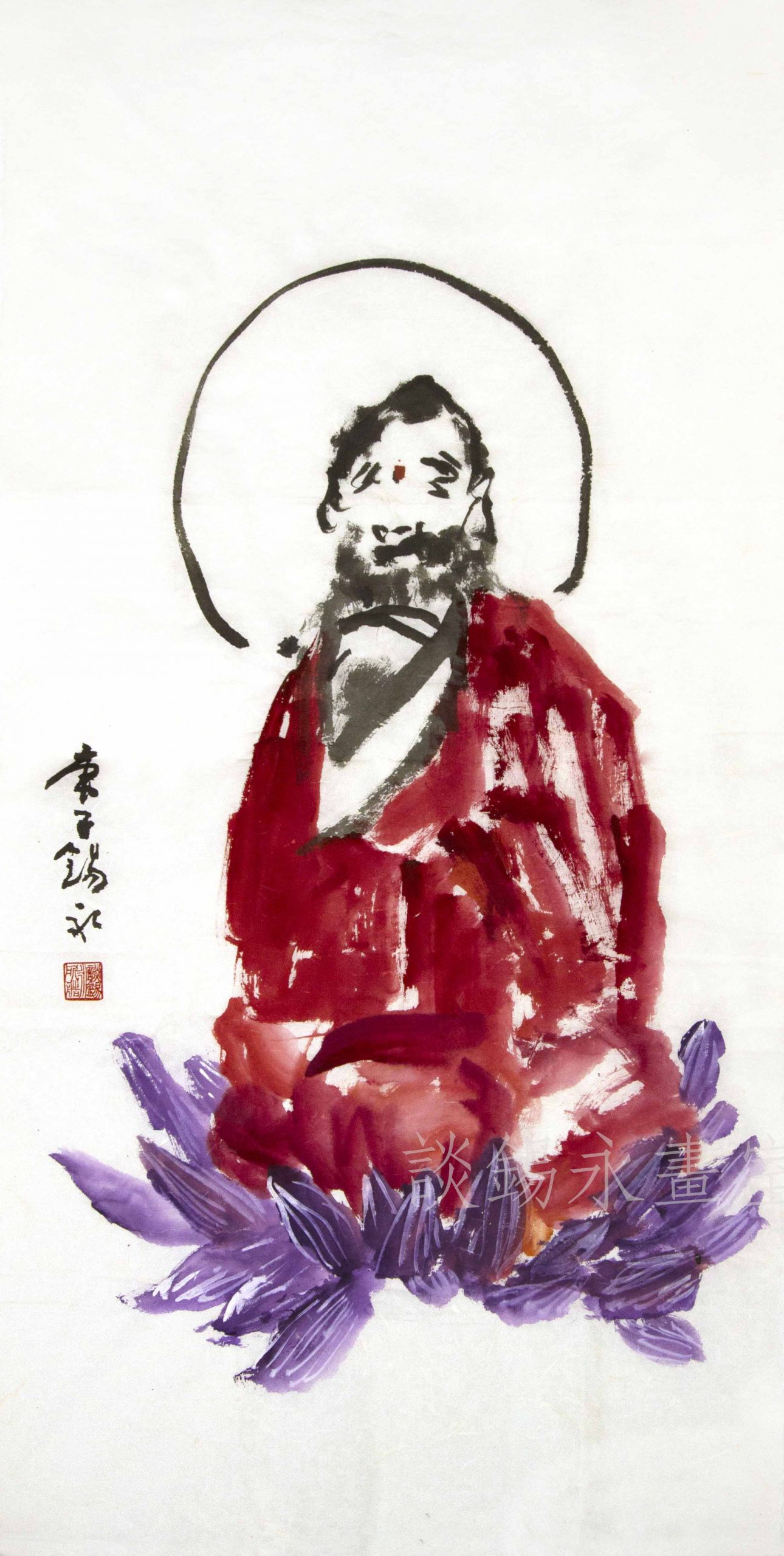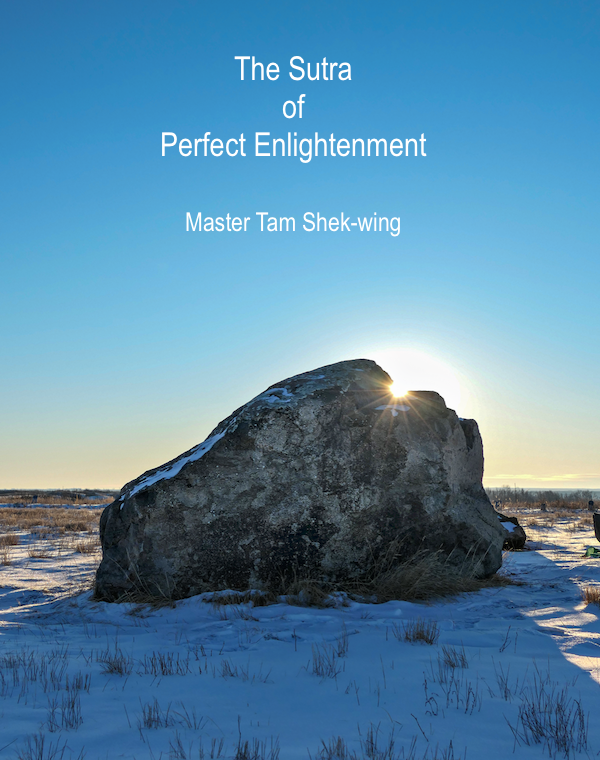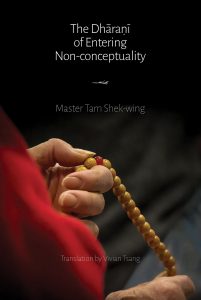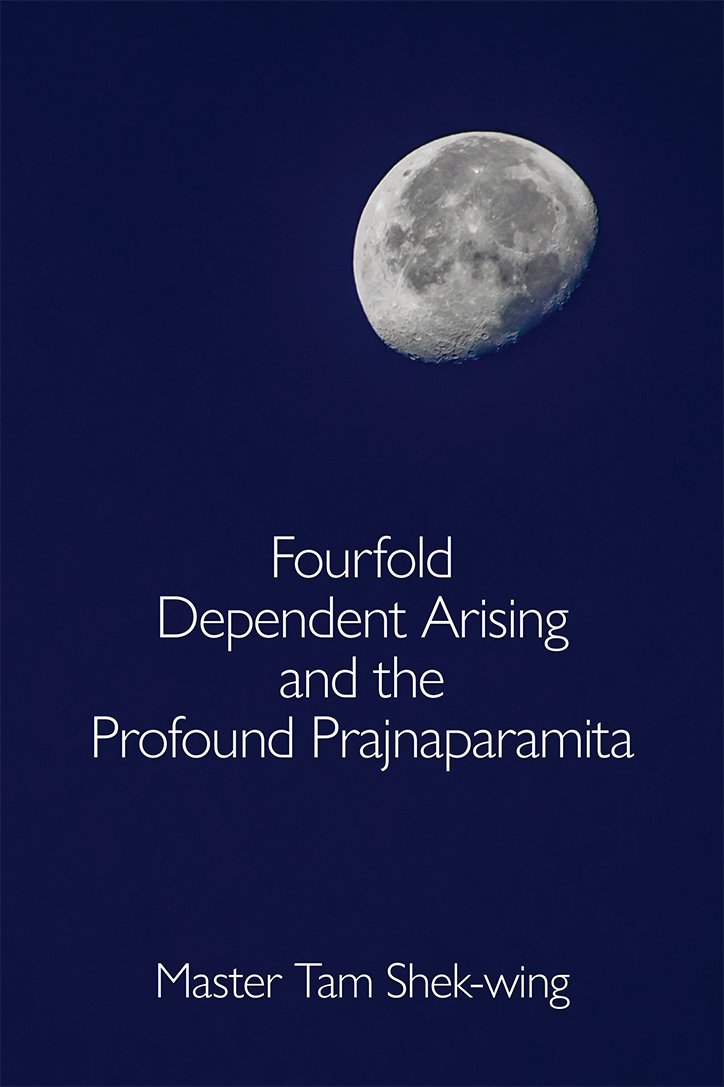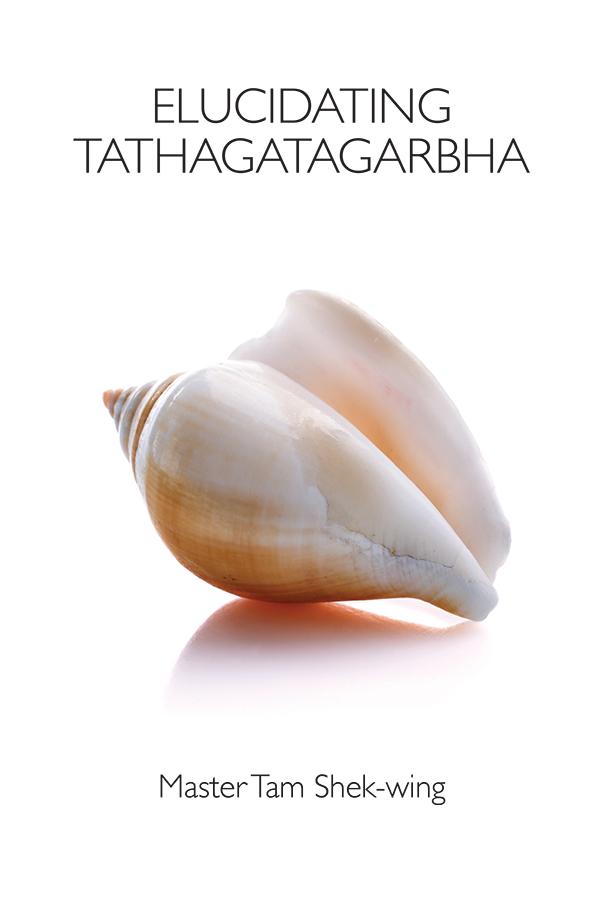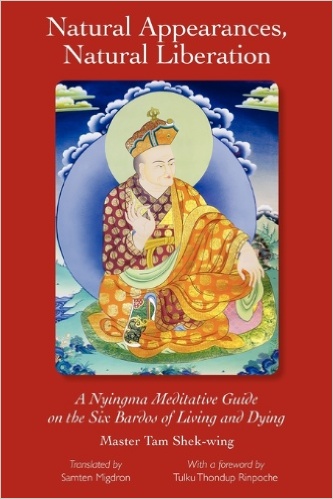Perfect Enlightenment 16: Bodhisattva Maitreya Inquiring Into the Root of Saṃsāra
Show scripture (Chinese). 於是彌勒菩薩在大眾中即從座起,頂禮佛足右遶三匝,長跪叉手而白佛言:「大悲世尊!廣為菩薩開祕密藏,令諸大眾深悟輪迴、分別邪正,能施末世一切眾生無畏道眼,於大涅槃生決定信,無復重隨輪轉境界起循環見。世尊!若諸菩薩及末世眾生,欲遊如來大寂滅海,云何當斷輪迴根本?於諸輪迴有幾種性?修佛菩提幾等差別?迴入塵勞,當設幾種教化方便度諸眾生?唯願不捨救世大悲,令諸修行一切菩薩及末世眾生,慧目肅清照曜心鏡,圓悟如來無上知見。」作是語已五體投地,如是三請終而復始。 Show scripture (English). Then the bodhisattva Maitreya arose from his seat in the great assembly and bowed his head to the Buddha’s feet. He circumambulated him three times to the right, and then knelt down with his hands clasped. He addressed the Buddha, saying: “Greatly Compassionate World Honoured One, you have opened wide the secret treasure for the bodhisattvas and have made all in the great assembly deeply awaken to transmigration and distinguish between the correct and mistaken. You have been able to impart the Fearless Eye of the Way and unshakable faith in Great Nirvana to the sentient beings of the degenerate age; they will not again chase after cyclic existence or give rise to cyclic views.” “World Honoured One; if the bodhisattvas and sentient beings of the degenerate age aspire to float on the Tathāgata’s great tranquil ocean, how should they sever the root of cyclic existence? In the various kinds of cyclic existence, how many types of beings are there? How many differences are there in types of practice of the Buddha’s bodhi? When we reenter the dirty and difficult world, what kinds of teaching devices should we establish to save all sentient beings? I implore you not to relax in your world-saving great compassion—that you clarify the Wisdom Eye of all practicing bodhisattvas and sentient beings of the degenerate age, illuminate their mind-mirror, and completely awaken the Tathāgata’s unsurpassed insight.” After saying this, he prostrated fully to the ground. He asked this question three times in succession. The fifth bodhisattva asking question is Maitreya, but in terms of the practice, the fourth one. The previous answer brought out an important issue in practice. For all sentient beings, if detaching from the root of saṃsāra is the attainment of perfect awareness, then how does one do so? It was said previously that saṃsāra is rooted in the cyclical view that gives rise to the cyclical mind. How, then, can one be rid of the cyclical view? This leads to Maitreya’s three questions. In the Buddhist Canon, it is the convention that whenever the subject pertains to the practice, Maitreya would be the leading bodhisattva asking Buddha questions. This is especially the case in the Prajña series. Maitreya has asked the crux in the issue of practice, how can one become detached from the root of saṃsāra? Maitreya's three questions... click to show more. His first question was how many types of beings there are. This was triggered by Buddha’s answer to Vajragarbha, that all grasping and releasing are cyclical, that the various types of grasping and releasing have their nature of cyclical existence, and hence Maitreya’s question. He then asked, in the practice of perfecting awareness, “How many differences are there in types of practice of the Buddha’s bodhi?” This is not a question on the various differences in the awareness. Rather, this is a question on the various differences in the practice. Thirdly he asked, “What kinds of teaching devices should we establish to save all sentient beings?” Following the previous question, if there are differences in the practice, then there would be differences in the expedient devices, and hence the question. On establishing Yogācāra... click to show more. What Maitreya asked of expedient devices is essentially the establishment of Yogācāra as illustrated in Yogācārabhūmi-śāstra and Saṃdhinirmocana-sūtra, which can further be divided into Dharmalakṣaṇaand Consciousness-Only. Dharmalakṣaṇa illustrates in detail all phenomena and their conditions within aggregates (skandhas), places (āyatanas), and realms (dhātus), but regarding one’s state-of-mind, the teaching belongs to the territory of Consciousnessly-Only. Therefore, Consciousness-Only forms only a portion of the Yogācāra establishment, and it is only a part of the teaching in Dharmalakṣaṇa. In some treatises, Consciousness-Only is said to be Yogācāra, this is a discussion on the detail given the general framework; elsewhere, when Yogācāra is said to be Consciousness-Only, this is a discussion on the overall framework given the specific detail. This way, the two are not equivalent. During the third turning of the wheel, Buddha discussed Consciousness-Only in detail, because it is only by then was when the practices towards profound prajñā pāramitā, the Buddha-Within, and non-duality were taught. Since it is about the practice, naturally it involves one’s mental state. Clearly, the topic of Consciousness-Only is only a part of the third turning of the wheel, and not the focus of it. These days, students of Consciousness-Only consider it the point of the third turning of the wheel, or even treat it as the essence of the entire Yogācāra establishment. Doing so is to flaunt. Neither Buddha nor Maitreya would expect it to be taken out of context, using Consciousness-Only to reject the fruition of Yogācāra, to reject the Buddha-Within. On the nature of saṃsāra and one's state-of-mind in the practice... click to show more. Returning to Maitreya’s question, inquiring into the nature of saṃsāra, naturally sentient beings’ state-of-mind becomes relevant, and therefore, Consciousness-Only becomes relevant. Regarding the different practices, it involves the nature of sentient beings, thus Consciousness-Only is also relevant here. Now this is also the case in terms of the different expedient devices. This way, all three questions involve Consciousness-Only, on storehouse/seeds consciousness (ālayavijñāna) that is non-conceptual, as well as ālaya where conceptuality is not manifested. This way, seeds (bīja) are established to discuss both ālaya and storehouse consciousness. Knowing this, then one would not unfairly take Consciousness-Only out of context and mistake it as the entirety of Buddhist practices. Stay tuned for the next post on Buddha’s answer on the severing the root of saṃsāra.Chinese:
English:
Commentary:


